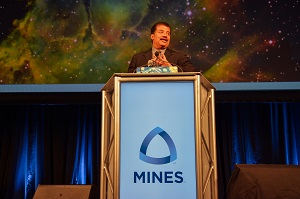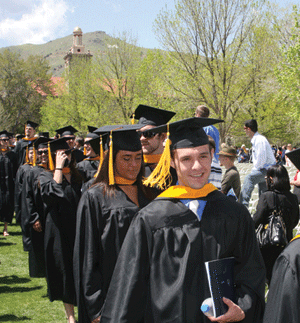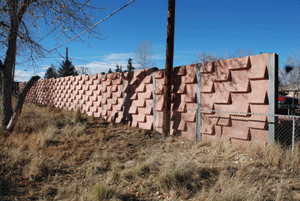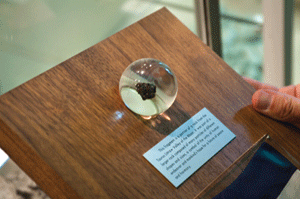Fans of Neil deGrasse Tyson lined up in the rain five hours before show time to catch an up-close glimpse of the celebrity astrophysicist credited with demoting Pluto, channeling Carl Sagan, and making science cool. “He’s interactive and funny and explains things in a way that makes it easy for anyone to understand,” said Mines alumna Kelsey Kopecky ’13, who arrived at 2 p.m. for the 7 p.m Alumni Weekend lecture at Lockridge Arena on September 30, 2015.
Tyson didn’t disappoint. By the time he wrapped things up near 10 p.m., he’d led a captivated audience of 2,500 on an eye-opening, at-times hilarious, multimedia journey from the birth of the universe to the origin of life and beyond, with detours through black holes, wormholes, and distant Technicolor planets. But first, he opened with a little ribbing: “This has got to be the geekiest audience I’ve ever had,” he said, drawing applause from the 1,500 Mines students in attendance—many of whom camped out overnight to get tickets.
Raised in New York City and educated at Harvard, Tyson has been director of New York City’s Hayden Planetarium since 1996 and a go-to space exploration consultant for U.S. presidents and NASA since 2001. He has written numerous astronomy books, including The Pluto Files: The Rise and Fall of America’s Favorite Planet, which chronicles his key role in the controversial 2001 decision to change Pluto’s status from planet to dwarf planet. “I became the most hated man in the world among third graders,” he told the audience, before sharing a letter written in “angry purple crayon.”
He is perhaps best known as host of “Cosmos: A SpaceTime Odyssey,” the FOX network’s 2014 reimagining of Carl Sagan’s 1980 PBS series. The smash hit has appeared on 181 stations in 47 languages. “This is evidence that science is mainstreaming,” Tyson said. His entertaining delivery may be one reason why.
Tyson began his Mines lecture—titled “Astronomy Bizarre”—with a playful discussion of how “Earth wants to kill you,” noting that 97 percent of species that once existed here are extinct, thanks to tsunamis, earthquakes, climate change, and comet and asteroid impacts from a solar system he likens to a “shooting gallery.” He then took the audience on a dazzling tour of that solar system, courtesy of images from NASA’s New Horizons, Cassini, Voyager, and other spacecraft. Along the way, he cracked many Mines-directed jokes: “Is that really a stick of dynamite in the mouth of your mascot? That is one bad-ass burro.” He also offered students inspiring words: “You see a problem that hasn’t been solved and you run to the front of the line to try to solve it. We need a critical mass of problem solvers like you.”

Mines students, faculty and staff enjoyed Neil deGrasse Tyson’s humorous approach to space science. (Credit: Kathleen Morton)
Tyson also raised provocative questions: Are there multiple universes? Is time travel possible? Could life have originated on another planet and been transported to Earth via microorganisms riding rocks dislodged by an asteroid collision? “That would mean all of us are descended from Martians,” he noted, only half joking.
With the audience still spellbound after two hours, he dimmed the lights and projected a powerful image on screen—a recent photo of Earth (a tiny speck of white in the shadow of Saturn’s rings) shot from Cassini as it orbited Saturn. Some call it the “Pale Blue Dot reprisal,” referring to the famous shot taken from Voyager in 1991 at Sagan’s suggestion. In a fitting conclusion, Tyson closed with a few of his predecessor’s words about that dot:
“That’s here. That’s home. That’s us. To me it underscores our responsibility to deal more kindly and compassionately with each other and preserve and cherish the pale blue dot—the only home we’ve ever known.”






